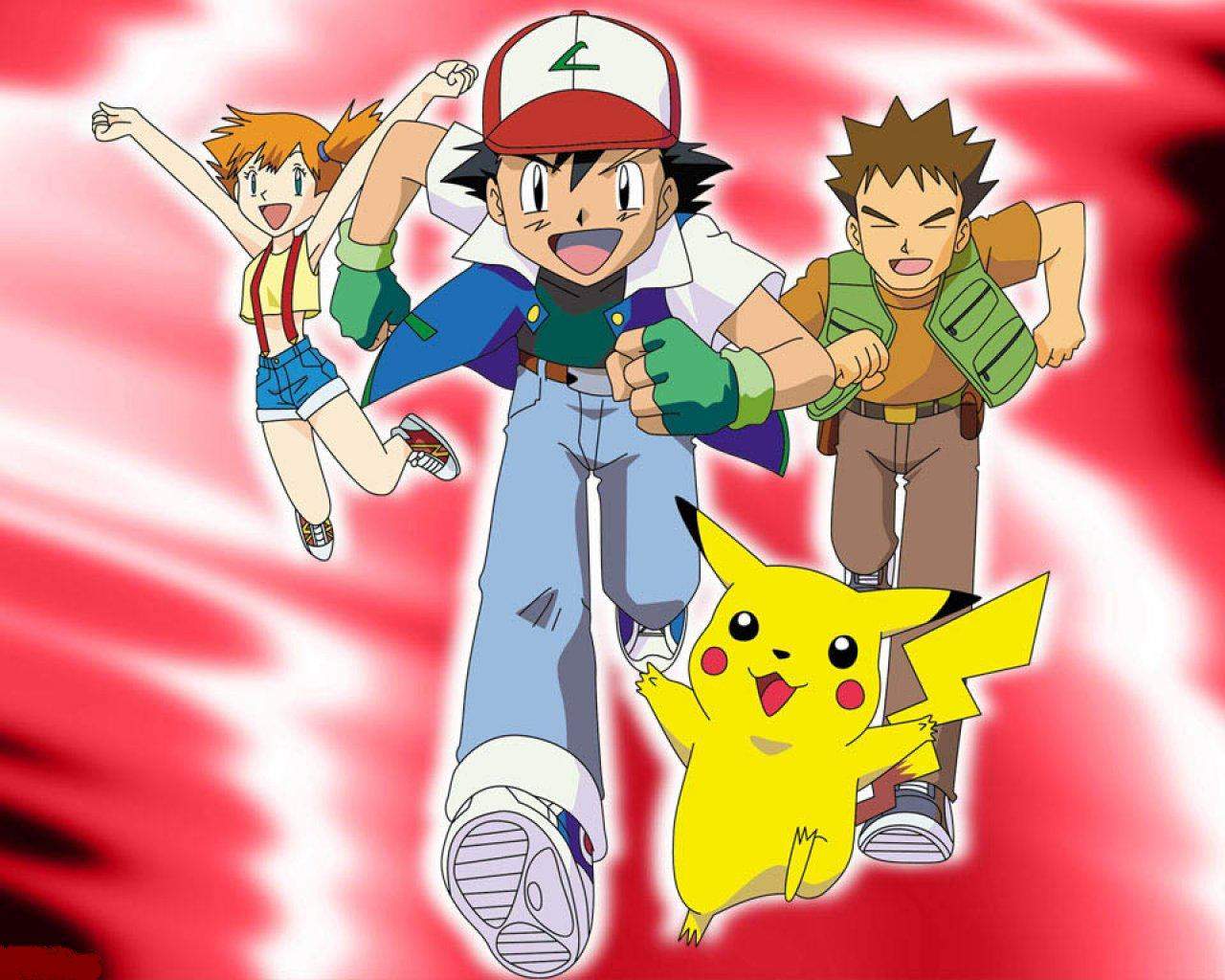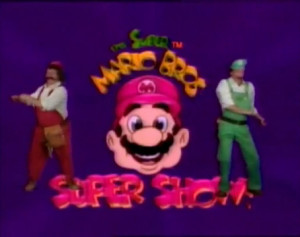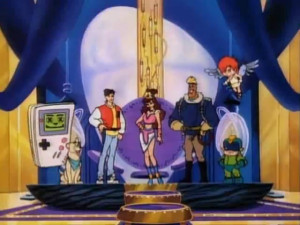Adventures in Animation: Nintendo After School
I’ve recently been noticing that whenever I turn on the TV and a cartoon starts, I feel myself changing into an old man in a rocking chair, shaking my fist at the sky and saying, “Dang kids these days wouldn’t know a good cartoon if it bit ’em!”
I think every generation is like that about some things, and I don’t think that’s bad. It’s good to take pride in the things that made your childhood awesome, and for me, Nintendo’s various cartoon series take some of the top spots. The main thing that was so great about these shows is that there were so many of them. Nintendo was really on a roll.
There were six major Nintendo cartoons that I grew up with. Let’s all put on our nostalgia glasses and take a look at some of the most memorable animated shows ever made.
First up, there’s The Super Mario Bros. Super Show from DiC Entertainment. The show had an extremely short run, from September to December of 1989, but with reruns being aired for years after its cancellation. It was your standard cartoon, based on the first two Super Mario Bros. games on the NES (mostly the second one), and it was a lot of fun. The games themselves obviously didn’t have very in-depth storylines, so there was a lot of creative freedom to be had, and it was entertaining enough. Each episode always started with Mario telling us that what we were about to see was yet another entry in his “plumber’s log,” a clear parody of “captain’s log” from Star Trek. This show was also the first time Mario and Luigi were said to be from Brooklyn, NY. For years, I had thought that it was always that way, even in the games, but that’s not true; In the games, the brothers have always been from the Mushroom Kingdom. This series had such an impact on me that I thought its story applied to the entire franchise.
For me, the best part of the show was the live-action half. For a few minutes before and after the cartoon, we were given a look at the apparently always silly plumbing company run by the brothers. Mario, played by the late wrestler-turned-actor “Captain Lou” Albano, and Luigi, played by Danny Wells, made no references to the Mushroom Kingdom in these segments. It was just a mini-sitcom, and it had a laugh track and everything. Most of the comedy was physical, and famous people in the entertainment industry would make cameo appearances in nearly every episode.
I liked this portion of the show the most because it was Albano who played Nintendo’s mascot. I grew up in New York, very close to where he lived. Albano was a really big family man, and he always participated in fundraisers at my elementary school. I met him a few times, and he was always willing to have his picture taken and hang out with the kids. Looking back, I appreciate Albano’s portrayal of Mario more than anything else about the show, because I know he actually enjoyed doing it. That’s more important to me than anything else.
Paired with this show was a special treat that every kid looked forward to on Fridays. That was the day Mario and Luigi hung up their overalls and took a break, and a certain princess and green-clad hero came out to play. Yes, every Friday, The Super Mario Bros. Super Show was replaced with the animated adaptation of The Legend of Zelda. I’m going to make a very bold statement here: I think I actually liked the Zelda cartoon more than the original game. The cartoon had everything – The epic soundtrack, familiar (and original) characters, the Triforces of Wisdom and Power, freakin’ Ganon in almost every episode… The end of the week was truly a magical time to be a Zelda fan.
This incarnation of the Zelda franchise had a key difference that wasn’t present in the games, and I think it was a change for the better: In the cartoon, Zelda wasn’t just some damsel in distress that you barely ever saw or even heard of. She and Link fought Ganon together, and she saved Link’s life just as often as he saved hers. It was one of the earliest kids’ shows I can remember that put a female character in a role that was usually reserved for men. It showed that Link, despite being the hero of the video game, wasn’t perfect, and even he could use a little help every once in a while. Who better than a strong-willed, magic-wielding princess who was in possession of one of the most powerful artifacts in the world? If you ask me, that kind of character sounds like she could have taken care of herself, and Zelda proved that to be true time and time again. It was a refreshing deviation from the norm that hadn’t been done much before then.
Cartoons starring the most famous plumber brothers in history didn’t end with Albano’s and Wells’s performances. The very next year, an equally short-lived animated series, oddly titled The Adventures of Super Mario Bros. 3, was released by DiC. This series didn’t have any live-action segments, and was heavily based on the game of the same name. All the familiar characters, power-ups, sound effects and music were present; It was literally like watching the game, except, you know, with much better graphics and actual dialog. The animation quality had improved quite a bit, too, and it was much smoother and easier to watch than the first cartoon. Being able to experience one of the most beloved video games ever created outside of the actual game itself was a real treat. The fact that it was such a great adaptation of the source material was icing on the cake.
One really random change that was made for the cartoon was the renaming of all the Koopalings. Larry Koopa’s name was changed to Cheatsy, Wendy was called Kootie Pie, Lemmy and Iggy were named Hip and Hop, etc. I suppose DiC wanted names that were easy for kids to remember, but I like the fact that all the Koopalings are named after musicians. It’s one of those little things in video games that often gets overlooked, but when you realize that there’s an Easter egg there, you can’t help but smile a little bit.
In 1991, DiC released a followup series based on Super Mario World for the Super NES, this time leaving the title the same as the game. The series only lasted long enough for 13 episodes (I’m starting to see a pattern here…), but they were great. The theme song was catchy, and, like the previous series, it was a pretty faithful adaptation of the game. There were a couple changes, though: Yoshi was portrayed as a baby, even after growing up. He typically spoke in broken English, like a child just learning how to talk. There was also an original character, the cave-child Oogtar. Personally, I wasn’t a fan of him. He was usually present for nothing more than comic relief, and I didn’t really think he was all that funny to begin with. I much preferred the familiar characters from the game.
Thankfully, Nintendo did have one cartoon series in the 90s that ran for more than a couple months, and it was easily the most interesting one of the bunch. Once again a product of DiC, Captain N: The Game Master was an original story that stayed on the air for three seasons, from 1989 to 1991. It starred Kevin Keene, a teenager who gets sucked into the TV while playing the NES. He and his dog end up in Videoland, where a group of heroes from popular NES games keep the peace throughout all the game worlds. The team was made up of Simon Belmont from Castlevania, Mega Man from, you guessed it, Mega Man, Pit from Kid Icarus (though the character was actually called Kid Icarus in this show), a giant, living Game Boy, and the original character, Princess Lana. This unlikely bunch had enemies in the forms of Mother Brain from Metroid, Eggplant Wizard from Kid Icarus, and King Hippo from Punch Out!!, who was given blue skin for some reason. This all probably sounds really weird now, but it worked out a lot better in motion than it seems on paper.
The characters were modified slightly from their original game counterparts: Simon was portrayed as cowardly and was most often used as comic relief; Mega Man was short and half-green and spoke in a gruff voice; Kid Icarus put “-icus” at the end of nearly every sentence that unfortunately came out of his mouth; and Game Boy… talked. Mother Brain looked completely different than her Metroid counterpart, and she wheeled herself around in some kind of glass jar tank-type thing. Kevin, an original character and hero of the series, could be molded as the writers saw fit, and was given the NES Zapper and controller as his weapons – He could even use the controller to “pause” enemies, allowing him to escape a sticky situation. The writers obviously took huge liberties as far as character development went, but somehow, it all worked out pretty well, and I never got tired of seeing what antics the gang would get into that week. Back in the days of the NES, it was often hard to portray a character with any kind of actual personality, so the cartoon breathed new life into its stars, giving gamers new ways of looking at their favorite heroes when they played their games again.
Since it was a story that no one had seen before, it hooked Nintendo fans of all ages. The thing that made Captain N so successful was that there was an element of mystery every time an episode was about to start. Since the cast was made up of all the famous characters that had appeared in recent NES games, the show could take place literally anywhere. Want to take a trip to Dracula’s castle? How about jumping into the futuristic world of 20XX? Even Hyrule was shown more than once throughout the course of the series, and Link and Zelda’s original voice actors reprised their roles. Ironically enough, not a single episode of Captain N featured the Mario Bros. or the Mushroom Kingdom.
There’s one more cartoon that Nintendo has created. Unlike the short-running shows above, this one debuted in 1997 and is still going strong today. I don’t know if many people will have heard of it, though… Have any of you readers out there heard of a little series called Pokémon?
I don’t think the Pokémon cartoon really needs that much of an introduction. It’s a loose adaptation of the Game Boy (and Game Boy Color, and DS, and 3DS…) series of the same name originally distributed by 4Kids Entertainment, but is now handled by The Pokémon Company itself. It follows a boy named Ash Ketchum as he travels the world, earning gym badges and bonding with his Pokémon, all the while trying his hardest to catch ’em all. Every few seasons, Ash’s human companions change, but Pikachu, his first Pokémon and best friend, is always at his side. This show is the reason Pikachu ended up becoming the unequivocal most popular character of all the Pocket Monsters.
As of this article’s writing, the cartoon series is over 16 years old, made up of 750+ episodes. It can also lay claim to 16 movies – all of which have gotten theatrical releases in Japan – and several spinoff series.
My. Goodness.
Whether you love or hate Pokémon, it’s absolutely impossible to deny its success, and the cartoon is no different. The games are constantly evolving (See what I did there?), and as long as the games remain popular, the same will be true of the cartoon. This is truly a unique situation; While I fondly remember Nintendo’s older ventures into the world of television, most kids today probably aren’t even aware that the shows ever existed. Pokémon, however, has been going on for so long that it’s looking more and more likely that it will actually bridge two generations; Maybe it already has. We all know that it isn’t showing any signs of slowing down, and I have a feeling that this cartoon is going to be something that parents who grew up watching it will end up doing again with their own kids, if only to remember the carefree days of their own childhoods. That’s not something that happens very often at all, but if anything can do it, it’s the ever-expanding and wondrous world of Pokémon.
While video games are obviously the main reason people know and love Nintendo so much, the company occupies a special place in my heart as the provider of my favorite cartoons, and some of the fondest after-school memories I can recall. I urge all you Nintendo fans to check out some of the older TV shows and experience some of the things that made my childhood so awesome.
Until next time, everybody, do The Mario!







October 31, 2013
Great piece, I was born a little too late to experience some of these as a child, but boy did I love watching Pokémon when I was a child and has kept me in love with the franchise since.